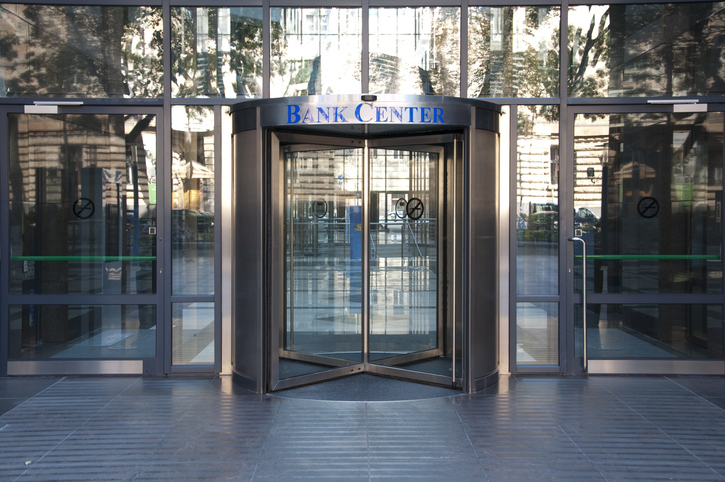When considering where to keep your financial assets, the choice between regional and national banks is a significant one. Regional banks are typically smaller in scale, offer a more localized banking experience and may even charge lower fees. They are often deeply embedded within the communities they serve, which can translate into a more personalized approach to customer service when compared with the national giants.
A financial advisor can help you manage your assets and set financial goals. Find a fiduciary advisor today.
What’s the Difference Between Regional vs. National Banks?
The banking landscape is characterized by a diverse institutions, each serving different needs and markets.
Regional banks are mid-sized institutions with total assets ranging from $10 billion to $100 billion. This makes them larger than community banks, which typically have less than $10 billion assets. While regional banks have historically been confined to providing services within a specific geographic area – a single state or several states – they can have a larger geographic footprint.
On the other hand, national banks boast a widespread presence across the country, operating on a much larger scale. They are usually much larger in terms of assets and branch networks, and they offer a comprehensive suite of services designed to meet the needs of a diverse customer base from various regions of the nation.
While the Federal Reserve uses specific asset ranges to classify an institution as either a regional or community bank, national banks are large commercial institutions that are chartered by the Office of the Comptroller of the Currency.
Examples of Regional Banks
Each of the following institutions had between $10 billion and $100 billion in total assets, making them regional banks:
- Townebank: Founded in 1999, Townebank operates 50 branches throughout Virginia and North Carolina.
- Fulton Bank National Assn: Fulton Bank, which traces its roots back to 1882, operates in Pennsylvania, New Jersey, Maryland, Delaware and Virginia.
- Frost Bank: Based in San Antonio, Texas, Frost Bank is a regional institution in Texas originally founded in 1868.
- Valley Bank: Despite being classified as regional bank, Valley Bank operates in both the Northeast and Southeast, with branch locations in New Jersey, New York, Florida and Alabama.
Examples of National Banks
Each of the following institutions holds a charter from the Office of the Comptroller of the Currency:
While national banks aren’t classified based on their asset levels, each of these banks has over $1 trillion in total assets.
Benefits of Regional Banks vs. National Banks

General advantages of regional banks include personalized service, potentially lower fees and a better understanding of local markets. These institutions are known for their commitment to the communities they serve, often reflected in the specialized services they provide.
1. More Personalized Customer Service
Regional banks often prioritize personalized customer relationships, setting them apart from their national counterparts. They typically employ relationship banking models, where bank representatives are encouraged to develop long-term relationships with customers. This approach involves understanding a customer’s financial history and preferences, which can lead to more customized service and advice. While regional banks often focus on personalized service, it’s important to recognize that the level of service can vary from bank to bank.
The community involvement of regional banks extends beyond the financial services they offer. Many regional banks actively sponsor local events such as charity runs, school financial literacy programs and community festivals. This involvement not only enhances their community presence but also fosters a sense of trust and loyalty among local residents.
2. Potentially Lower Fees
One of the tangible benefits of banking with regional institutions is the potential for lower fees. Regional banks may charge lower average fees for services like account maintenance, ATM usage, and overdrafts compared to national banks.
The impact of lower fees at regional banks can be particularly significant for consumers who maintain lower account balances or require more specialized banking services. For an individual with a modest checking account balance, the difference in monthly maintenance fees between a regional and a national bank could translate into considerable annual savings.
Small business owners, who may frequently deposit cash or require other specialized services, might find that regional banks offer more cost-effective solutions. These savings can be crucial for customers who are looking to maximize their financial resources and minimize unnecessary expenditures. To better understand the potential savings, consider using a comparison chart or calculator to estimate how choosing a regional bank could affect your finances.
3. Better Understanding of Local Markets
Regional banks are often more attuned to local market conditions and economic factors, which can be a significant advantage for customers. These institutions may adjust their services and products in response to local economic trends, such as offering lower mortgage rates in areas experiencing a housing boom or providing flexible loan terms during a local economic downturn.
This deep local expertise allows regional banks to offer financial products and services that are better suited to the needs of the local population and businesses. For example, a regional bank in a coastal area might specialize in boat loans or fishing industry financing, while a bank in a wine-producing region could offer vineyard financing and grape harvest insurance products.
This responsiveness demonstrates a commitment to the financial health of the community and an understanding that one-size-fits-all banking does not always serve the best interests of local customers. However, while regional banks may have a better understanding of local markets, this does not always result in better financial outcomes for every customer.
Are Regional Banks as Safe as National Banks?
The safety of financial institutions is a paramount concern for depositors, who often wonder whether their funds are more secure in a national bank compared to a regional one. This concern is not unfounded, as the stability of a bank can significantly impact the security of deposits.
Look no further than the banking crisis of March 2023 when Silicon Valley Bank collapsed on the heels of steep interest rate increases. Signature Bank, another regional institution, followed suit days later when regulators forced its closure. Then in May, First Republic Bank, a regional institution in San Francisco, went under in what is the second-largest banking collapse in U.S. history. In total, five banks with nearly $550 billion in assets collapsed in 2023, according to American Banker.
That’s not to say regional bank customers aren’t protected in what remain rare cases of bank failures. Federal Deposit Insurance Corporation (FDIC) coverage serves as a critical safety net for depositors, regardless of whether they choose a regional or national bank. Both types of institutions offer the same level of FDIC insurance coverage, which insures deposits up to $250,000 per depositor, per insured bank, for each account ownership category.
It’s important for depositors to understand that the FDIC insurance limit of $250,000 applies to each depositor, within each insured bank, for each account ownership category. For example, an individual could have up to $250,000 insured in a single account and another $250,000 in a joint account at the same insured bank, effectively ensuring $500,000 at that institution. Moreover, if the same individual has deposits at another insured bank, those would also be covered up to $250,000 per ownership category.
This multi-tiered approach to coverage ensures that both regional and national banks provide the same level of protection, making them equally safe in terms of insurance coverage. This uniformity in insurance coverage is a cornerstone of the banking system, designed to maintain public confidence and financial stability.
Choosing a Regional Bank vs. National Bank

Unlike larger national banks, regional banks often pride themselves on their ability to offer a more intimate banking experience. Customers at regional banks might find that bank representatives recognize them by name, transforming visits to the branch into more personable encounters.
However, potential clients should note that this is not a guarantee, and the level of personal recognition can vary from bank to bank. Moreover, regional banks may provide customized loan options that are specifically designed to fit individual financial situations, such as flexible repayment terms for local entrepreneurs that align with their business’s cash flow patterns. While this level of personalization can be a significant advantage, it’s essential to understand that loan conditions are subject to approval and may not always be more favorable than those offered by national banks.
On the other hand, national banks might offer benefits that regional banks do not, such as a wider range of financial products, more extensive ATM and branch networks, or advanced online banking technology. These features can be particularly important for those who travel frequently or require a broad array of financial services.
National banks can also have robust customer service programs and personal banking options, challenging the notion that only regional banks provide personalized service.
Bottom Line
Regional banks shine with their tailored customer relationships, local market expertise and active community engagement, offering a banking experience that resonates with those who value a closer-knit financial partnership. National banks, on the other hand, may appeal more to those seeking convenience, extensive networks, and a wide array of services, particularly for customers with diverse banking needs or those who travel frequently.
Financial Planning Tips
- It’s important to have an emergency fund with enough cash to cover between three and six months’ worth of living expenses. You’ll want to keep this money in a liquid account, like a savings or checking account. Just be mindful of the account’s interest rate – just because this money is for emergencies doesn’t mean it shouldn’t be working for you. You’ll want to choose an account at an FDIC-insured institution (or credit union covered by the NCUA) that offers higher APY than the paltry national average (0.47% as of March 2024).
- Once you have your banking squared away, focus on setting financial goals. A financial advisor can help you do this by building you a comprehensive financial plan. Finding a financial advisor doesn’t have to be hard. SmartAsset’s free tool matches you with up to three vetted financial advisors who serve your area, and you can have a free introductory call with your advisor matches to decide which one you feel is right for you. If you’re ready to find an advisor who can help you achieve your financial goals, get started now.
Photo credit: ©iStock.com/Milan Markovic, ©iStock.com/SDI Productions, ©iStock.com/focusstock
